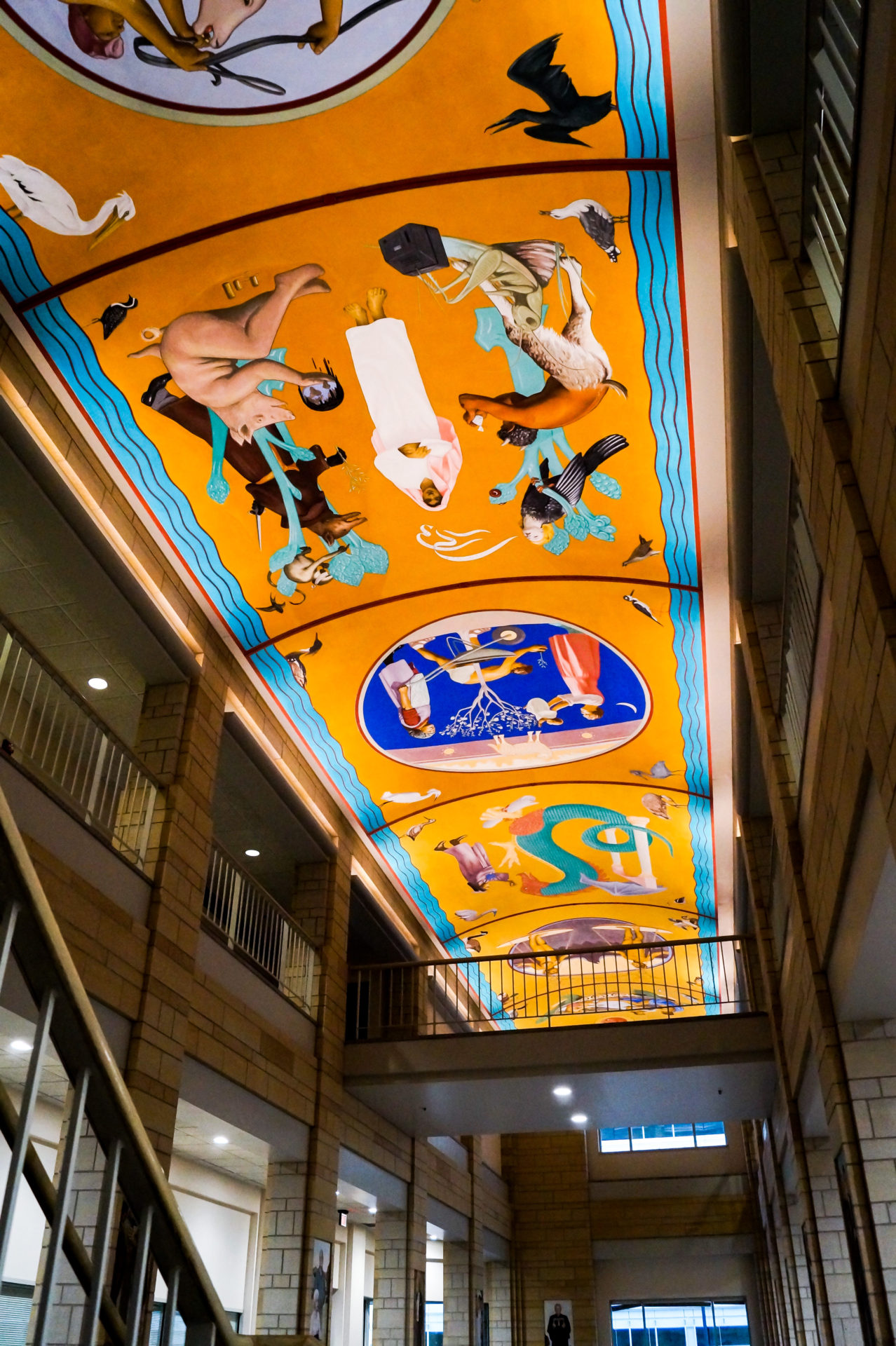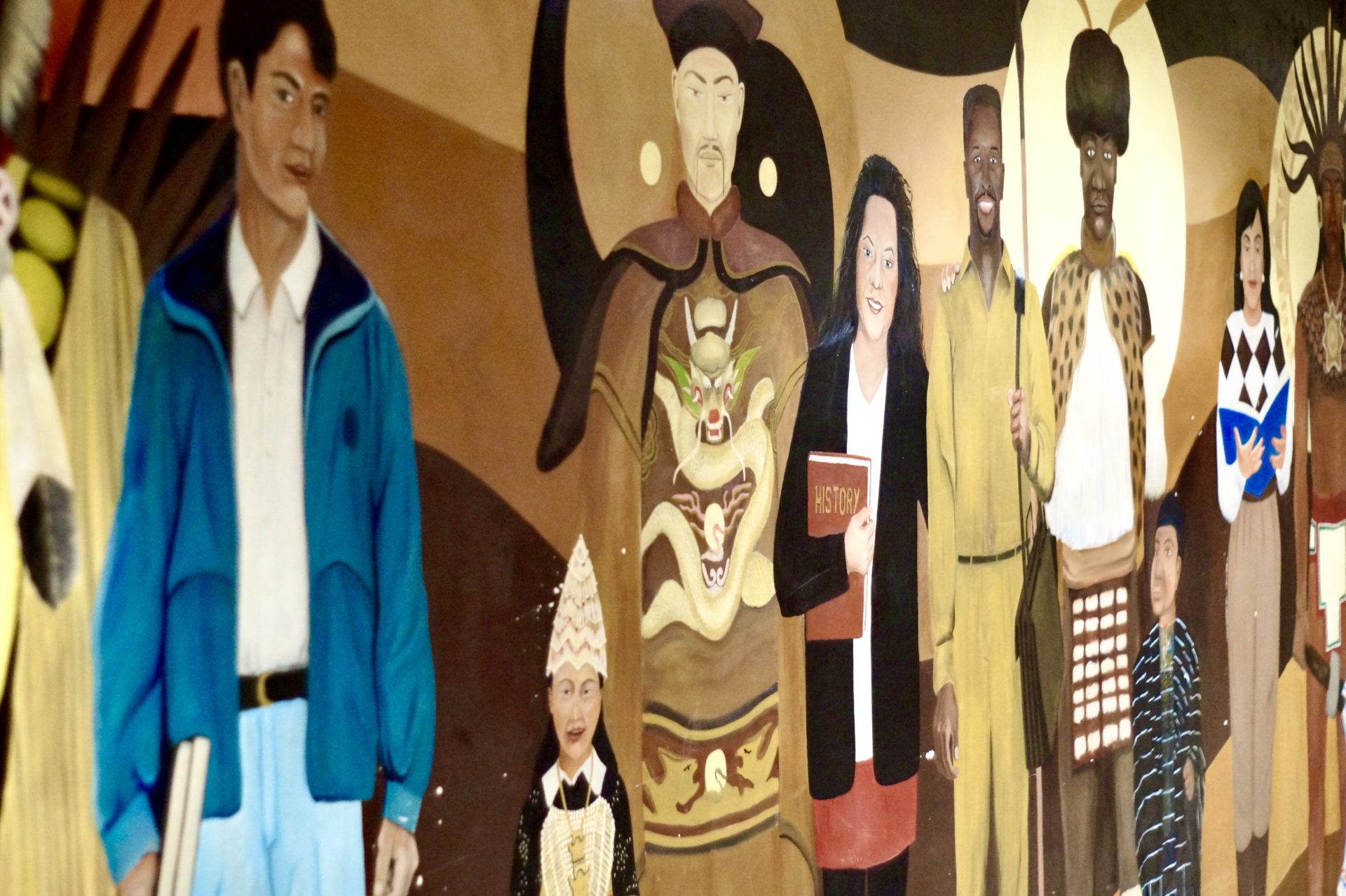
St. Thomas is home to many different works of art, from the Multicultural celebration mural in Murray-Herrick hall to a 112-foot long fresco on the ceiling of Terrence Murphy Hall in downtown Minneapolis.
Throughout the years, the culture and climate of St Thomas have evolved and changed. The art on campus is an attempt to represent those changes.
“Where’s the representation? How are we represented here on campus? How are we acknowledged?” Heather Shirey, associate professor of Art History, said.
Many St. Thomas students know about the mural in the basement of Murray-Herrick, but do not know that the people pictured were students at St. Thomas in 1991 when the mural was commissioned to show the cultural diversity on campus.
Shirey researched this mural for several years and can answer some questions that many students have about the mural and even ones she had before her research began.

“That mural was actually a direct response to the marble murals that are done in downtown Minneapolis campus,” Shirey said. “ What I have heard from the people who were pictured, that there was a sense that the mural downtown only reflected one story at St. Thomas, and that it was important to have another mural that really showed the diversity of students at St. Thomas and really reflected the student body.”
The Minneapolis fresco depicts the Seven Virtues that Saint Thomas Aquinas believes all people should believe. There are also portraits of Board of Trustees members on the pillars of the atrium.
The artist of the piece, Mark Balma, is a seasoned fresco painter who was commissioned to paint the Seven Virtues in 1991 and completed the project in 1995.
Fresco painting is a long and difficult process due to the nature of the material it is made with. It is a mural made directly of plaster and pigments that are mixed at different levels and pasted on top of wet plaster.
Jessie Fisher, an assistant who worked on the fresco, was 19 when she had the opportunity to be a part of this commission.

Located in the basement of Murray Herrick, the Multi-cultural diversity mural is a representation of St Thomas’ student’s diversity. The mural was inspired by students’ requests for representation through art on campus. (Jamie Tjornehoj/TommieMedia)
“A lot of painters describe frescoes being sort of like a living being because if it’s too dry, you need to feed it more pigment and more water. If it’s too wet, you’re painting on the surface, but it hasn’t quite sucked in, and so you’re sort of managing that all day long.” Fisher said.
The Seven Virtues depicts seven different images of each virtue through Balma’s interpretation. Each panel also shows a different bird, representing the beauty of the Mississippi River, which is something that brings a local touch to the paintings.
Both murals depict two very different sides of the St Thomas community.
“It speaks to a very particular moment in time. I hope the murals are always preserved because it represents students who graduated from this university and that the university still cares,” Shirey said.
Mae Macfarlane can be reached at macf7507@stthomas.edu.


